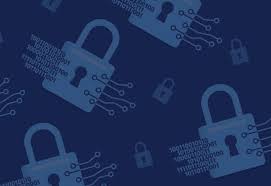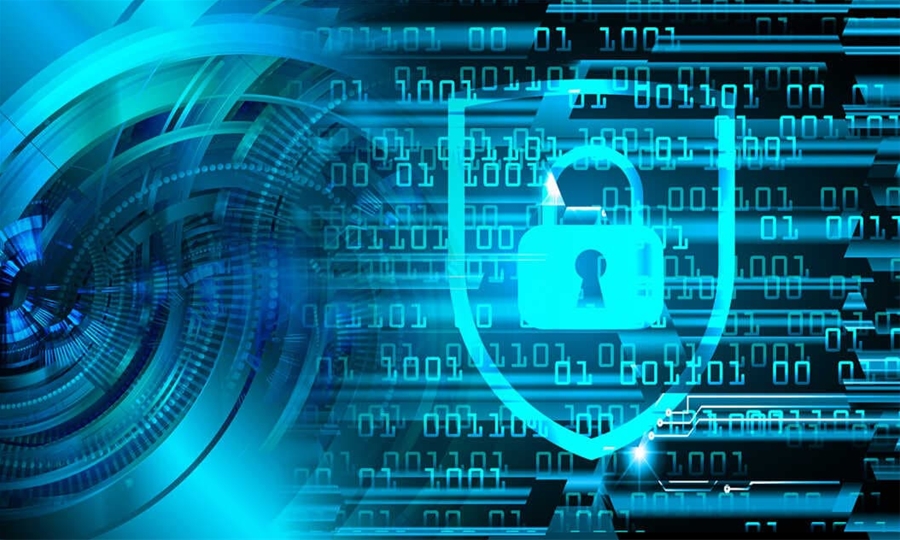Abstract- Beside cryptography algorithms which are based on the upper layers of protocol stack to ensure confidentiality in communication systems, the idea of physical layer security (PLS) in wireless network systems dates back to (in) 1970s. In the past decade, this idea has been studied by many researchers from all around the world. Initially, this method required that the source-destination channel is better than source-eavesdropper channel. However, current advances in technology, especially with the help of relay and beamforming technique the PLS problem is now possible even though the above channel condition is not met. For wireless relay networks, there are two main relaying schemes often employed for physical layer security Decode-and-Forward (DF) and Amplify-and-Forward (AF). In this paper, we present the state-of-the-art of both these techniques in physical layer security and some future research directions related to them.
|
Tài liệu tham khảo [1] Bloch, M., Barros, J. “Physical-layer Security: From Information Theory to security Engineering”, Cambridge University Press (2011). [2] Boyd, S., Vandenberghe, L “Convex optimization. Cambridge”, U.K. Cambridge Press (2004). [3] Charnes, A., Cooper, W.W. “Programming with linear fractional functionals”. In: Naval Res. Logist. Quart, vol. 9, pp. 181–186 (Dec 1962). [4] Csiszár, Korner, J.: Broadcast channels with confidential messages. IEEE Trans. Inf. Theory 24(3), 339–348 (May 1978). [5] Dong, L., Han, Z., Petropulu, A., Poor, H.: Improving wireless physical layer security via cooperating relays. IEEE Trans. Signal Process 58(3), 1875–1888 (March 2010). [6] Dong, L., Han, Z., Petropulu, A., Poor, H. “Amplify-andforward based cooperation for secure wireless communications”. In Acoustics, Speech and Signal Processing, 2009. ICASSP 2009. IEEE International Conference on. pp. 2613–2616 (April 2009). [7] G. Zheng, K. Wong, A.P., Ottersten, B. “Collaborativerelay beamforming with perfect csi Optimum and distributed implementation”. IEEE Trans. Signal Process Letters 16(4) (Apr 2009). [8] G. Zheng, K. Wong, A.P., Ottersten, B. “Robust collaborative-relay beamforming”. IEEE Trans. on Signal Proc 57(8) (Aug 2009). [9] Golub, G., Loan, C.F.V. “Matrix Computations “(3rd ed).Johns Hopkins University Press (1996). [10] Jing, Y., Jafarkhani, H. “Network beamforming using relays with perfect channel information”. Information Theory, IEEE Transactions on 55(6), 2499–2517 (June 2009). [11] Jorswieck, E., Wolf, A., Gerbracht, S. “Secrecy on the Physical Layer in Wireless Networks”, ch. 20. INTECH (2010). [12] Khisti, A. “Algorithms and architectures for multiuser, multiterminal, and multilayer information theoretic security”. Ph.D. thesis, MIT (2008). [13] Khisti, A., Wornell, G.W. “Secure transmission with multiple antennas: The misome wiretap channel”. IEEE Trans. Inf. theory (Aug 2007). [14] Le Thi, H.A. “DC Programming and DCA”. http://www.lita.univlorraine.fr/ lethi/ [15] Lei Wang, Yue-ming Cai, L.Z., Yang, W. “Secrecy throughput of miso single-eavesdropper ropper networks with imperfect channel state information”. Electronics Letters (15), pp. 1169–1170 (June 2015). [16] Leung-Yan-Cheong, S.K., Hellman, M.E. “The Gaussian wire-tap channel”. IEEE Trans. Inform. theory. Vol. 24(4), pp. 451–456 (July 1978). [17] Li, J., Petropulu, A., Weber, S. “On cooperative relaying schemes for wireless physical layer security”. IEEE Trans. Signal Process Vol. 59(10), pp. 4985–4997 (October 2011). [18] Li, Z., Trappe, W., Yates, R. “Secrete Communication via Multi-antenna Transmission”. In: 41st Annual Conference on Information Sciences and Systems (CISS). pp. 905–910 (2007). [19] Liu, R., Poor, H.V. “Secrecy capacity region of a multiantenna Gaussian broadcast channel with confidential messages”. IEEE Trans. Inform. theory. vol. 55(3), pp. 1235–1249 (Jun 2009). [20] Lun Dong, Z.H., Petropulu, A., Poor, H.V. “Secure wireless communication via cooperation”. In Proc. 46th Annual Allerton Commun., Control, and Computing, Monticello, IL (Sept 2008). [21] Muhammad Fainan Hanif, M.J., Tran, L.N. “Antenna selection with erroneous convaiance matrices under secrecy constraint”. IEEE Transactions on Vehicular Technology (2015). [22] Oggier, F., Hassibi, B. “The secrecy capacity of the MIMO wiretap channel”. IEEE Trans. Inf. theory (Oct 2007). [23] P. K. Gopala, L.L., Gamal, H.E. “On the secrecy capacity of fading channels”. IEEE Trans. Inform. Theory vol. 54(10), pp. 4687–4698 (Oct 2008). [24] Pham Dinh, T., Le Thi, H.A.: Convex analysis approach to DC programming: Theory, algorithms and applications. Acta Mathematica Vietnamica 22(1), 289–357 (1997). [25] R. Liu, I. Maric, P.S., Yates, R.D. “Discrete memoryless interference and broadcast channels with confidential messages: Secrecy capacity regions”. IEEE Trans. Inform. theory. vol. 54(6), pp. 2493–2507 (Jun 2008). [26] Shafiee, S., Ulukus, S. “Achievable rates in gaussian miso channels with secrecy constraints”. In: Information Theory, 2007. ISIT 2007. IEEE International Symposium on. pp. 2466–2470 (June 2007). [27] Siddhartha Sarma, S.A., Kuri, J. “Secure Communication in Amplify-and-Forward Networks with Multiple Eavesdroppers: Decoding with SNR Thresholds”. In: Wireless Pers Commun, Springer New York (2015). [28] Sonee, A., Hodtani, G.A. “On the secrecy rate region of multiple-access wiretap channel with noncausal side informatiion”. IEEE Transactions on infromation forensics and security (6). 2015. [29] Sturm, J.: Using sedumi 1.02: A matlab toolbox for optimization over symmetric cones., opt. methods and software. Special issue on Interior Point Methods 11-12, pp. 625–653 (1999). [30] Tekin, E., Yener, A. “The general gaussian multipole access and two-way wire-tap channels: Achievable rates and cooperative jamming”. Information Theory, IEEE Transactions on 54(6), 2735–2751 (Jun 2008). [31] Tran Thi Thuy, Nguyen Nhu Tuan, L.T.H.A., Gely, A. “DC programming and DCA for enhancing physical via relay beamforming strategies”. In: Lecture Note in Computer Science LNCS, Springer (March 2016). [32] Tuan, N.N., Son, D.V.: DC programming and DCA for Enhancing Physical Layer Security in Amplify-andForward Relay Beamforming Networks Based on the SNR Approach. In: Advances in Intelligent Systems and Computing, Springer International Publishing. pp. 23-33 (June 2017). [33] V. Nassab, S. Shahbazpanahi, A.G., Luo, Z.Q. “Distributed beamforming for relay networks based on second order statistics of the channel state information””. IEEE Trans. On Signal Proc 56(9), 4306–4316 (Sept 2008). [34] Vishwakarma, S., Chockalingam, A. “Decode-and-forward relay beamforming for security with finite-alphabet input”. IEEE Communication Letters 17(5) (May 2013). [35] Wyner, A.D. “The wire-tap channel”. Bell Sys. Tech. Journ. 54, 1355–1387 (1975). [36] Y. Liang, H.V.P., Shamai, S. “Secure communication over fading channels”. IEEE Trans. Inform. Theory 54, pp. 2470– 2492 (June 2008). [37] Y. Yang, Q. Li, W.K.M.J.G., Ching, P. “Cooperative Secure Beamforming for AF Relay Networks With Multiple Eavesdroppers”. In: IEEE Signal Processing Letters. vol. 20, pp. 35–38 (2013). [38] Z. Q. Luo, W. K. Ma, A.M.C.S.Y.Y., Zhang, S. “Semidefinite relaxatiion of quadratic optimization problems”. In: IEEE Signal Processing Mag.,. vol. 27, pp. 20–34 (May 2010). [39] Zhang, J., Gursoy, M. “Collaborative relay beamforming for secrecy”. In: Communications (ICC), 2010 IEEE International Conference on. pp. 1–5 (May 2010). |
Nguyễn Như Tuấn, Đặng Vũ Sơn, Nguyễn Ngọc Cương

09:00 | 21/12/2016

11:00 | 07/01/2021

10:00 | 12/11/2019

16:00 | 10/10/2017

09:00 | 16/01/2018

16:00 | 29/12/2020

15:00 | 13/08/2011

13:00 | 26/02/2024
Operation Triangulation là một chiến dịch phức tạp nhắm vào thiết bị iOS trong các cuộc tấn công zero-click. Tạp chí An toàn thông tin đã từng cung cấp một số bài viết liên quan đến chiến dịch này, như giải mã tính năng che giấu của phần mềm độc hại TriangleDB, những cuộc tấn công zero-day trên thiết bị iOS hay giới thiệu cách sử dụng công cụ bảo mật phát hiện tấn công zero-click. Tiếp nối chuỗi bài viết về chiến dịch Operation Triangulation, bài viết sẽ phân tích các phương thức khai thác, tấn công chính của tin tặc trong chuỗi tấn công này, dựa trên báo cáo của hãng bảo mật Kaspersky.

16:00 | 14/11/2023
Dựa trên công bố của công ty quản lý định danh và truy cập Okta (Mỹ) vào ngày 20/10/2023 liên quan đến một vi phạm bảo mật gần đây, các nhà nghiên cứu đã xác định rằng các tác nhân đe dọa đã giành được quyền truy cập thành công vào hệ thống hỗ trợ khách hàng của Okta, kẻ tấn công có thể xem các tệp tải lên (upload) liên quan đến các trường hợp hỗ trợ mới bằng mã thông báo phiên hợp lệ, các tác nhân đe dọa sau đó đã có được quyền truy cập vào hệ thống của khách hàng. Trong bài viết này sẽ mô tả tác động của các hành vi vi phạm của nhà cung cấp danh tính (IdP) và cách các tổ chức có thể tự chủ động bảo vệ mình trước các cuộc tấn công này.

10:00 | 08/08/2023
Bên cạnh việc phát triển không ngừng của các công nghệ, giải pháp an toàn thông tin được ứng dụng, triển khai trên hệ thống mạng của các tổ chức, doanh nghiệp, các hoạt động tấn công mạng vẫn không ngừng diễn ra và có sự gia tăng cả về số lượng, phạm vi, cách thức với tính chất ngày càng tinh vi. Cùng với việc sử dụng các kỹ thuật và công cụ để vượt qua các hàng rào bảo mật, tin tặc còn tìm cách để lẩn tránh điều tra số. Bài báo sẽ trình bày về một trong những kỹ thuật mà tin tặc thường sử dụng để chống lại các hoạt động điều tra số, đó chính là việc xóa bỏ các chỉ mục trên máy tính nạn nhân.

23:00 | 22/01/2023
Với sự bùng nổ và phát triển của công nghệ mạng Internet cùng nhiều tiện ích và giải trí hiện nay, kéo theo đó là tần suất gia tăng các cuộc tấn công mạng, việc sử dụng hàng loạt những website lừa đảo không an toàn, nhằm mục đích đánh lừa người dùng truy cập vào những website độc hại để thực hiện hành vi đánh cắp thông tin, hay lây lan những phần mềm chứa mã độc đang trở thành một xu hướng tấn công của tin tặc. Nhận thức được tầm quan trọng của việc truy cập an toàn trên môi trường mạng, bài báo sau đây sẽ cung cấp đến độc giả những kỹ năng cần thiết để sử dụng các công cụ hỗ trợ nhằm kiểm tra chỉ số về độ an toàn của website, qua đó giúp người dùng an tâm và tránh được việc thông tin của bản thân bị đánh cắp và lợi dụng cho những mục đích xấu.

Lược đồ chữ ký số dựa trên hàm băm là một trong những lược đồ chữ ký số kháng lượng tử đã được Viện Tiêu chuẩn và Công nghệ Quốc gia Mỹ (NIST) chuẩn hóa trong tiêu chuẩn đề cử FIPS 205 (Stateless Hash Based Digital Signature Standard) vào tháng 8/2023. Bài báo này sẽ trình bày tổng quan về sự phát triển của của lược đồ chữ ký số dựa trên hàm băm thông qua việc phân tích đặc trưng của các phiên bản điển hình của dòng lược đồ chữ ký số này.
09:00 | 01/04/2024

Theo báo cáo năm 2022 về những mối đe doạ mạng của SonicWall, trong năm 2021, thế giới có tổng cộng 623,3 triệu cuộc tấn công ransomware, tương đương với trung bình có 19 cuộc tấn công mỗi giây. Điều này cho thấy một nhu cầu cấp thiết là các tổ chức cần tăng cường khả năng an ninh mạng của mình. Như việc gần đây, các cuộc tấn công mã độc tống tiền (ransomware) liên tục xảy ra. Do đó, các tổ chức, doanh nghiệp cần quan tâm hơn đến phương án khôi phục sau khi bị tấn công.
19:00 | 30/04/2024